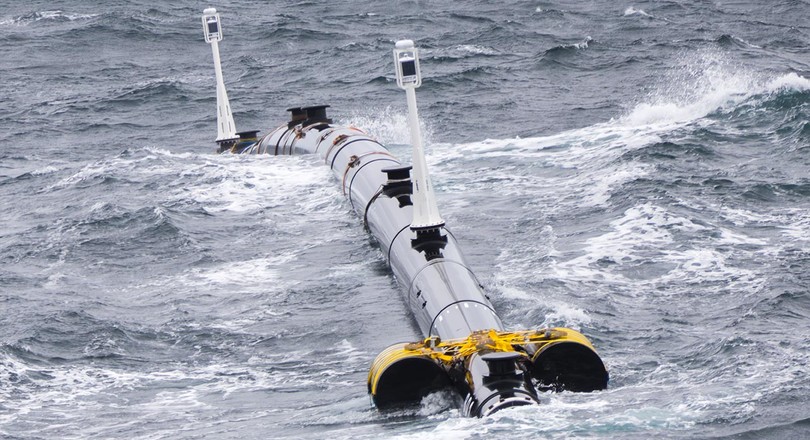
The Ocean Cleanup plastic clearance operation has modified its design for the final time before it goes operational. The new plastic capturing system will float through the ocean currents faster than the plastic flows, and will no longer be anchored.
This redesign comes a year after a major announcement of a previous new design (read: 'Ocean Cleanup introduces new design'). At the time, Ocean Cleanup founder Boyan Slat explained that the initial idea of anchoring the plastic barriers to the seabed proved to be impractical, and that floating moorings would work more effectively. The idea was that the barrier segments would move more slowly through the ocean currents than the plastic itself, so the plastic could be captured.
However, four days after the grand presentation of the anchors, that theory was proven not to be ideal, writes Slat in an update. The wind and waves were found to have a greater influence than initially imagined, and the combination with the drag anchor would sometimes send the barrier in the wrong direction, pushing plastic away instead of capturing it.
FASTER THAN PLASTIC
The system therefore has no anchor at all now and the barrier will move faster than the plastic. The wind and waves influence the floater but not the plastic in the ocean, so the barrier moves slightly faster. The natural ocean current automatically pushes the 600-metre-long plastic capturing system to those spots with the greatest concentration of waste. A 3-metre-long screen in the water also captures deeper-lying plastic. Subsequently, a boat will pick up the plastic collected and remove it from the ocean.
The new design also shows how Ocean Cleanup can monitor the operation. Solar panels power warning lights, sensors, cameras and satellite antennas. These all provide constant data on the location of the floater and whether or not it is full of plastic. The lights ensure that the barrier is visible to shipping traffic.
FINAL DESIGN
The intention is to eventually have 60 of these 600-meter-long arms floating in the ocean. The first one is currently under construction in San Francisco. When compared with the previous test version, which was launched earlier this year, this new design has a longer working life, is easier to deploy and clears the plastic more effectively, according to the Ocean Cleanup engineers.
While Slat admits that this is undoubtedly not the last update of the design, this version will be the first to actually collect plastic in the ocean. The operation is scheduled for late summer this year. It will begin quite close to the coast, before moving to the Grand Pacific Garbage Patch, 1200 nautical miles off the West Coast of the US.
If you found this article interesting, subscribe for free to our weekly newsletter!
Nieuwsbrief
Vond je dit een interessant artikel, abonneer je dan gratis op onze wekelijkse nieuwsbrief.

